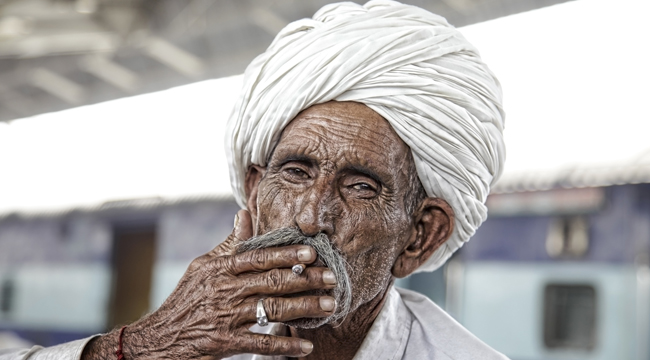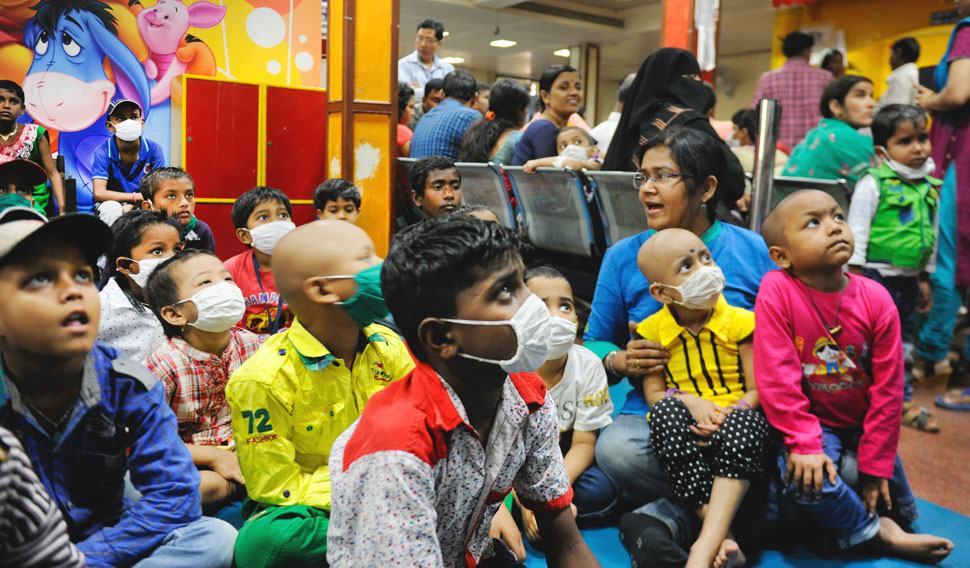
SAY NO
Some cancers can be prevented

Dr. K.R. Madhava
February 2, 2015

Cancer is costly, debilitating, painful, potentially fatal, and many times, preventable
India, probably, has the most diverse population, complete with a variety of cultures and food habits. Increasing migration of rural population to the cities, changes in lifestyle and increasing life expectancy are undoubtedly responsible for rising incidences of cancer in the country. According to the National Cancer Institute, 80 per cent of cancers are related to our lifestyle. For most families, cancer appears like a bolt from the blue. Cancer is costly, debilitating, painful and potentially fatal.
Tobacco use, in the form of smoking, dipping, sniffing or chewing, is responsible for 30 per cent of all cancers. Alcohol abuse could be another reason for some types of cancer. A diet high in fat and low in fiber, and inadequate intake of certain vitamins and minerals may also cause cancer. Other lifestyle factors include, being overweight, sedentary lifestyle with lack of adequate physical exercise, exposure to environmental and occupational cancer causing substances through the air, water or food. Among fair-skinned people, overexposure to the sun can also cause cancer. High exposure to radiation from various sources, family history of certain cancers, age above 50 years and high-levels of unresolved stress can also lead to development of cancers.
Tobacco use
Eighty-three per cent of lung cancers are caused due to smoking. Tobacco increases the risk of developing at least 14 types of cancers. Male smokers have 23 times increased risk and female smokers have 17 times increased risk of developing cancers compared to nonsmokers. Tobacco has 50 types of carcinogens. One of the carcinogens called benzopyridine epoxide is directly associated with lung cancer. Cigarette smoking induces inflammation which leads to activation of NF-kB, thus leading to the development of cancers.
Alcohol abuse
Chronic alcohol intake is responsible for cancers of the aero-digestive tract (oral cavity, pharynx, larynx and esophagus), liver, pancreas and breast. In the US, it has been estimated that 4 per cent of all breast cancers are due to alcohol intake. For each addition of 10gm of alcohol everyday, the risk of breast cancer increases by 7.1 per cent. The combination of smoking and drinking increases the risk of these cancers by 36 times. Excessive alcohol intake of over 60gms per day also increases risk of hepatocellular cancers (HCC). It is believed that there is synergistic effect of alcohol with Hepatitis B and C viral infections in the development of HCC.

Unbalanced diet
A significant number (30- 35 per cent) of cancers worldwide are believed to be due to diet. Approximately, 70 per cent of colorectal cancers have been ascribed to diet. Most carcinogens like nitrates, nitrosamines, pesticides and dioxins responsible for gastro-intestinal cancers come from food, food additives or are derived from cooking. Heavy consumption of red meat is responsible for 38 per cent of colorectal cancers, 39 per cent of prostate cancers, 40 per cent of bladder cancers, 41 per cent of breast cancers and 43 per cent of pancreatic cancers. Heterocyclic amines produced during cooking meat is carcinogenic. Charcoal cooking and smoking and curing produce pyrolysate and aminoacids that can cause cancer.
Obesity
According to American Cancer Society, obesity is associated with increased mortality from the cancer of colon, breast, endometrium, kidneys, esophagus, gastric, pancreas, prostate, gall bladder and liver.
Infection
About 17.8 per cent of all tumours are associated with infection. Causes of many cancers have been attributed to viral infections. Cervical cancer, which is still the most common cancer among women in rural India, is mostly caused by Human Papilloma Virus (HPV) infection. HPV infection is a sexually-transmitted disease. It occurs in people who have unprotected sex at a younger age, have multiple sexual partners and follow poor hygiene. Epstein Barr virus (EBV) is known to cause lymphoma, a cancer of lymph glands and nasopharyngeal cancer. Human immunodeficiency viral (HIV) infection predisposes to several cancers including brain lymphomas, sarcomas and blood cancers. Hepatitis B and C infections are known to spread during surgical procedures or during blood transfusions, causing liver damage in the form of cirrhosis, eventually leading to hepatocellular cancer (HCC).
Environmental pollution
Environmental pollution has been linked to various cancers. It includes outdoor air pollution by carbon particles, associated with polycyclic aromatic hydrocarbons (PAH), and indoor air pollutants such as volatile organic compounds and pesticides that increase the risk of childhood leukemia and lymphoma. Children as well as adults exposed to pesticides have increased risk of brain tumors, Wilms' tumors, Ewing’s sarcoma and germ cell tumors.
Radiation
Up to 10 per cent of total cancer cases may be induced by radiation, both ionising and non-ionising, typically from radioactive substances. Cancers induced by radiation include some types of leukemia, lymphoma, thyroid cancers, sarcomas, lung and breast carcinomas.
Cancer prevention
The fact that only 5-10 per cent of all cancer cases are due to genetic defects and that the remaining 90-95 per cent are due to environmental and lifestyle factors, provides major opportunities for preventing cancer. Avoidance of tobacco products and minimisation of alcohol consumption would likely have a major effect on the number of cancer incidence.
The fact that only 5-10 per cent of all cancer cases are due to genetic defects and that the remaining 90-95 per cent are due to environmental and lifestyle factors, provides major opportunities for preventing cancer.
Vaccines for cervical cancers and HCC should help in preventing some of the cancers and a cleaner environment and modified lifestyle behavior would be even more helpful in preventing infection-caused cancers.
Diet, obesity and metabolic syndrome are closely linked to various cancers and may account for as much as 30-35 per cent of cancer deaths, indicating that a reasonably good fraction of cancer deaths can be prevented by modifying the diet.
It is essential to maintain appropriate weight for height, thus avoiding being both under and over weight. Physical activity needs to be promoted to avoid obesity and accumulation of fat.
Intake of protective foods such as cereals, pulses, roots and tubers, green leafy and yellow vegetables, fruits and spices providing nutrients as well as protective phytochemicals should be preferred. Animal foods (meat and fat) except fish should be curtailed. It is necessary to avoid salted, pickled, smoked and charred food substances. The role of an Indian diet containing various spices like turmeric, cumin, chillies and amrita bindu syrup, in prevention of cancer, is under research.
I believe that with the knowledge that up to 95 per cent of cancers are due to lifestyle and environmental factors, there is a hope of reduction, if not total prevention, of most cancers by changing our lifestyle.
Q&A with Dr. Jame Abraham

Dr. Abraham is the director of the Breast Oncology Program at the Taussig Cancer Institute, US
What screening options are available for cervical cancer?
Development and widespread use of pap smear is one of the most important success stories in cancer detection and prevention.
For more, click here

